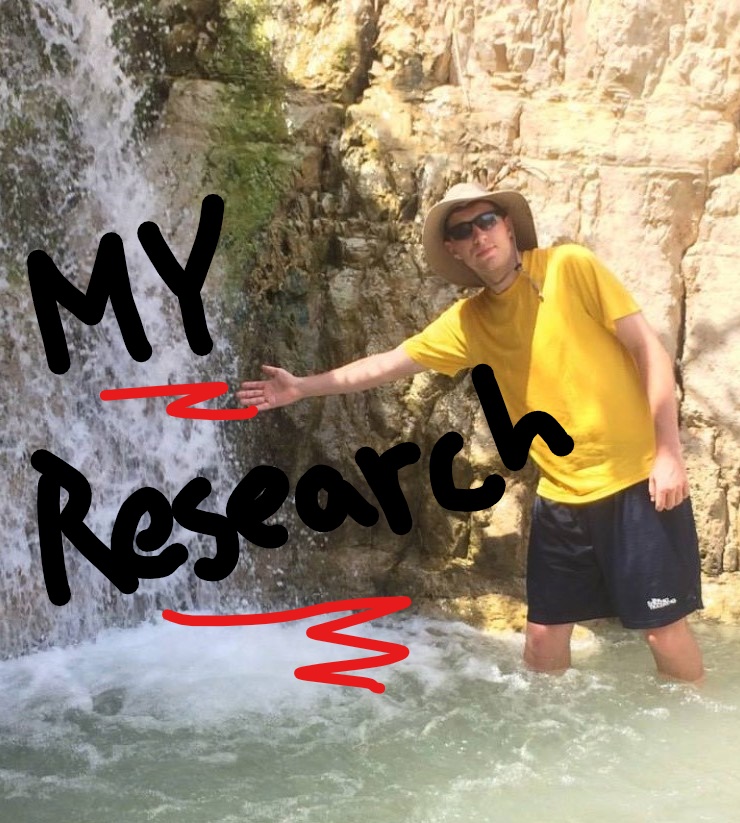
A little bit about my research
I primarily search for exoplanets using the radial velocity (RV) detection method but I am further interested in intersection of stellar activity and planet hunting. Stellar activity induced signals can mask or masquerade as planets. In this new era of high precision instrumentation which allows us to probe below the 1 m/s signal threshold, we are finding that such stellar activity will be a persistent nuisance in the search for low mass and/or long period planets.
Someday I might like to get my hands a little dirty with an instrumentation project…
Here I am at Cape Canaveral with friends test driving an Apollo capsule model. All systems go! —–>

Between my undergraduate research with Professor Keivan Stassun and (now Assistant Professor at Michigan State University) Joseph Rodriguez, my graduate research with my advisor Paul Robertson, and now as a postdoc with Erik Petigura, I have worked on a wide variety of projects within exoplanet science. Here are a few categories and highlights:
Building a Better Periodogram:
Stellar activity is a real nuisance when planet-searching via the radial velocity (RV) method. Activity induced signals, from phenomena like star spots, can either mask a true planetary signal (false negative) or mimic a planet (false positive). These signals are inherently tied to the rotation period of the star but the phenomena responsible have varying lifetimes and decay rates. So while activity signals are periodic signals, they are not robust across all time. They will gain and lose signal power over their life cycle. This is inherently different from a planet signal, which is robust across all time. But because activity signals are periodic, our current tools for finding periodic signals will pick up on them, which can cause us to misinterpret activity signals as planet signals. We need new tools which can differentiate between robust sinusoids (planets) and decaying wavelets (activity). I am working on building this new periodogram.
Spin-Orbit Misalignment and Dynamics:
As more planets are discovered and more can be fully characterized and scrutinized, astronomers are finding that planets don’t always align nicely with their star. That is to say, the orbital plane of the planet is not exactly perpendicular to the axis of rotation of the host star. In our Solar System, the largest misalignment belongs to Mercury at just under 7 degrees. But in extrasolar planets, astronomers are finding spin-orbit angles at every value between 0 and +/- 180 degrees (negative values indicate that the planet orbits in the opposite direction of the star’s spin…a “backwards” or retrograde orbit). This phenomena has important implications for our understanding of how planets form but more data is needed, we need more well measured systems. In particular, we need to measure the alignment of more multi-planet systems and more small planets.
Eta Solar System:
A big question in exoplanet science is: how common are Earth-like planets? The occurrence rate of Earth like planets is often shorthanded as “Eta Earth” (where Eta is often used as the greek letter to designate and occurrence rate). I am interested in taking this a step further, what is the occurrence rate of Solar System-like architectures, that is Eta Solar System? To find this value, I have to define what a Solar System-like architecture and at its simplest, this is a system where all planets are at wide separation from their host star and the inner system is composed of small, rocky planets while the outer system is composed of large gaseous planets. How can we search for these kinds of exoplanet systems most efficiently?
Optimal Telescope Scheduling:
Before any science takes place, we need time on a telescope! With so many programs, each awarded a set amount of time and with a specific desired observational strategy on their stars, what is the best way to schedule everyone’s observations on the telescope to maximize the science? I have developed an algorithm based on integer-linear programming methods to compute the optimal schedule. AstroQ, my autoscheduling software, runs in just minutes on modern workstation but saves hundreds of hours of human scheduling effort.
Double M dwarf Eclipsing Binaries:
M dwarf stars are the most common type of star in the universe. However, they are still poorly understood: the models that relate fundamental properties of stars like mass, radius, and temperature work very well for high mass stars like our Sun, but they break down for the low mass M dwarf stars. To help these models work better, we need to supply the theorists with more and better data points. The best way to do this is to perform detailed model-independent characterizations of M dwarf stars and the best way to do that is to find these stars in eclipsing binary systems, ideally where both components of the binary are M dwarfs. We found the 2nd brightest ever double M-dwarf EB and used it to make precise measurements of those fundamental parameters.
And more…!
See my full library of published papers here.
If you are so inclined, you can read my dissertation here.
I was the Winter 2021 quarter UCI Physics & Astronomy Department student spotlight! Read all about it!
I am a contributing author on the Astrobites team. Read my posts here!
publications (most recent on top)
first or second author
-
AstroQ: Automated Scheduling of Cadenced Astronomical Observations
-
The TESS-Keck Survey XX: 15 New TESS Planets and a Uniform RV Analysis of all Survey Targets
-
TOI-1670 c, a 40-day Orbital Period Warm Jupiter in a Compact System, is Well-aligned
-
Stellar Activity Manifesting at a One Year Alias Explains Barnard b as a False Positive
n author
-
Discovery of a Nearby Habitable Zone Super-Earth Candidate Amenable to Direct Imaging
-
TOI-6324 b: An Earth-mass Ultra-short-period Planet Transiting a Nearby M Dwarf
-
Stellar Obliquity of the Ultra-short-period Planet System HD 93963
-
Peekaboo: Secular Resonances from Evolving Stellar Oblateness Impede Transit Detection
-
The TESS-Keck Survey XXIV: Outer Giants may be More Prevalent in the Presence of Inner Small Planets
-
Revised Masses for Low Density Planets Orbiting the Disordered M-dwarf System TOI-1266
-
The California Legacy Survey V. Chromospheric Activity Cycles in Main Sequence Stars
-
A Tale of Two Peas-In-A-Pod: The Kepler-323 and Kepler-104 Systems
-
The TESS-Keck Survey XXI: 13 New Planets and Homogeneous Properties for 21 Subgiant Systems
-
The TESS-Keck Survey. XVIII. A sub-Neptune and spurious long-period signal in the TOI-1751 system
-
TOI-2015b: A Warm Neptune with Transit Timing Variations Orbiting an Active mid M Dwarf
-
TOI-1801 b: A temperate mini-Neptune around a young M0.5 dwarf
-
Investigating the Atmospheric Mass Loss of the Kepler-105 Planets Straddling the Radius Gap
-
The TESS-Keck Survey. XVI. Mass Measurements for 12 Planets in Eight Systems
-
Overfitting Affects the Reliability of Radial Velocity Mass Estimates of the V1298 Tau Planets
-
The TESS-Keck Survey. XV. Precise Properties of 108 TESS Planets and Their Host Stars
-
Scaling K2. VI. Reduced Small Planet Occurrence in High Galactic Amplitude Stars
-
The TESS Grand Unified Hot Jupiter Survey. II. Twenty New Giant Planets
-
TOI-1136 is a Young, Coplanar, Aligned Planetary System in a Pristine Resonant Chain
-
TOI-561 b: A Low Density Ultra-Short Period “Rocky” Planet around a Metal-Poor Star
-
TESS-Keck Survey XIV: 2 giant exoplanets from the Distant Giants Survey
-
The TESS Grand Unified Hot Jupiter Survey. I. Ten TESS Planets
-
TOI-1696 and TOI-2136: Constraining the Masses of Two Mini-Neptunes with HPF
-
A close-in puffy Neptune with hidden friends: The enigma of TOI 620
-
Rotational modulation of spectroscopic Zeeman signatures in low-mass stars
-
TESS Giants Transiting Giants II: The hottest Jupiters orbiting evolved stars
-
TOI 560 : Two Transiting Planets Orbiting a K Dwarf Validated with iSHELL, PFS and HIRES RVs
-
HD207897 b: A dense sub-Neptune transiting a nearby and bright K-type star
-
TKS V. Twin sub-Neptunes Transiting the Nearby G Star HD 63935
-
The TESS-Keck Survey. VI. Two Eccentric sub-Neptunes Orbiting HIP-97166
-
A Second Planet Transiting LTT~1445A and a Determination of the Masses of Both Worlds
-
TOI-1235 b: a keystone super-Earth for testing radius valley emergence models around early M dwarfs